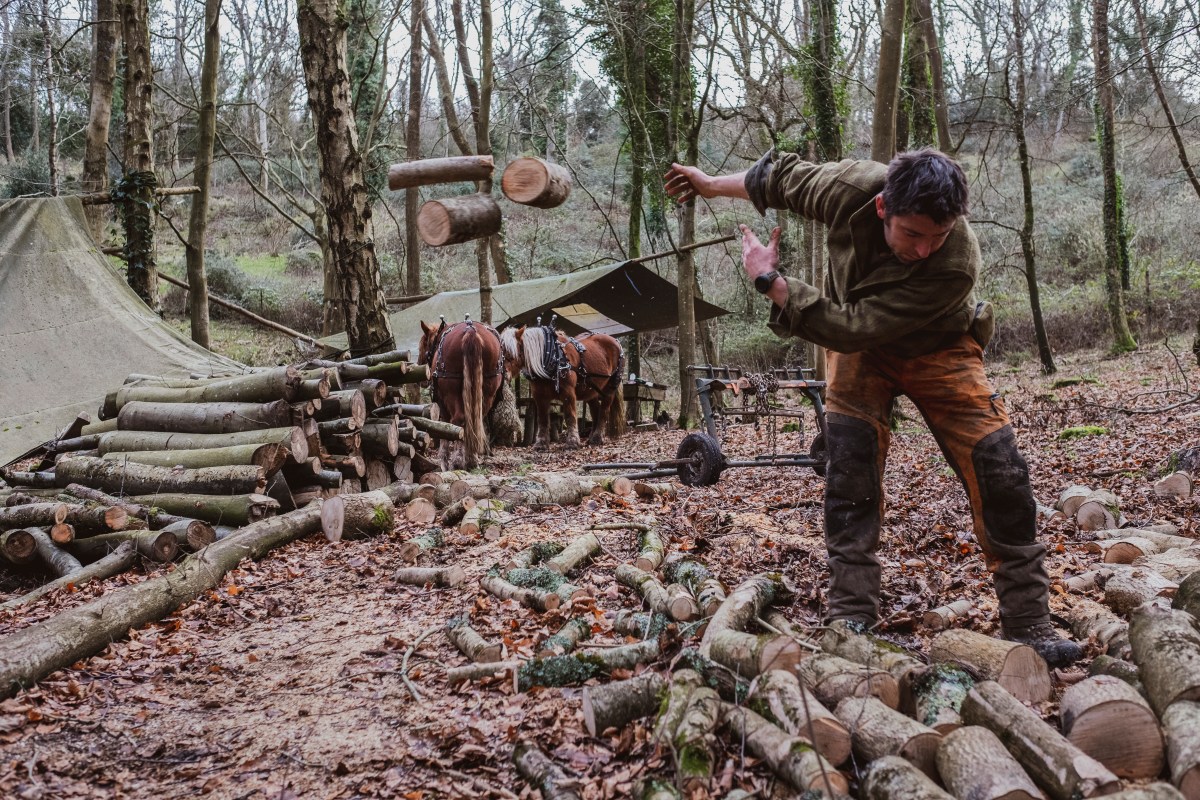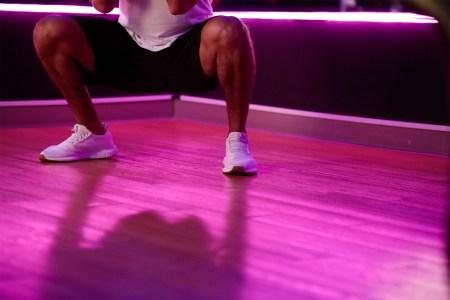There’s a sneaky excellent Bourdain episode — back in his No Reservations days — where Tony heads north to Maine, in wintertime, at the behest of his cinematographer colleague Zach Zamboni.
Zamboni introduces Tony to his “off-the-grid uncles,” brings him to a BBQ via snowmobile and all the while preaches the area’s core credo: chop wood, carry water. The late chef ends up doing a little bit of both, but he struggles with the first part, in particular: “I was born to do this. Actually, I was born to call the super and say ‘more heat.’” Eventually, he recognizes that it’s good for him and falls for the state’s wacky ways.
While most of us can’t swing an ax with the stoic certainty of a Mainer, the old-school motion is good for the soul…and an indisputable boon for the body. Lumberjack activities build a compelling mix of strength and stamina, and yield functional, crossover appeal for a whole host of other lifestyle vocations: home renovation, child care, sports, zombie prep, you name it.
The Plumbing Product That Belongs in Your Lifting Routine
Don’t sleep on PVC. Try these moves with the cheap tubing.Why It Works
Chopping wood — and carrying it, tossing it to the side, etc. — is a full-body affair that requires a rare mix of power and endurance. Loggers need to recruit practically every muscle in their body; they need grip strength, balance, a solid midsection. They may need to flip logs over, load them onto a sleigh and drag them through the woods, or navigate uneven terrain. They typically have to twist and bend while performing these movements.
You could always get a crash course in old-school logging by renting a cabin somewhere (perhaps teaming up with some hermit uncles), but it’s also possible to try out these movements using unconventional tools at your local gym. Equipment like kettlebells, medicine balls, sand bags, truck tires and sledgehammers will give you a chance to simulate the work without actually having to go to the woods.
Some key moves to try include “ax chops” with a medicine ball, sledgehammer swings with a tire, farmer’s walks with kettlebells and drags with a weighted sled. (The easiest place to find this stuff is the turfed section of your gym…which is usually way more fun than doing the same routine in the mirrored dumbbell area, anyway.)
Below, we’ve created two different lumberjack circuits. Remember to warm up for 10 minutes or so before attempting either — there’s a reason manual labor is considered “back-breaking” — and to prioritize proper form.
The “Johnny Appleseed” Workout
| CIRCUIT A | CIRCUIT B |
| Ax Chops with Medicine Ball | Kettlebell Swings |
| 3 sets of 12 reps (each side) | 3 sets of 15-20 swings |
| Log Clean and Press | Tire Flips |
| 3 sets of 8-10 reps | 2-3 sets of 5-6 flips |
| Woodchopper Squats | Battle Ropes |
| 3 sets of 12 reps each side | 3 sets of 30-second intervals |
| Farmer’s Walk | Lumberjack Lunges |
| 3 sets of 1-minute walks | 3 sets of 10 reps per leg |
| Stair Climbing or Hill Sprints | Bear Crawls |
| 10-minute continuous climb | 1-2 minutes or a set distance |
Whether you’re looking to get into shape, or just get out of a funk, The Charge has got you covered. Sign up for our new wellness newsletter today.



















